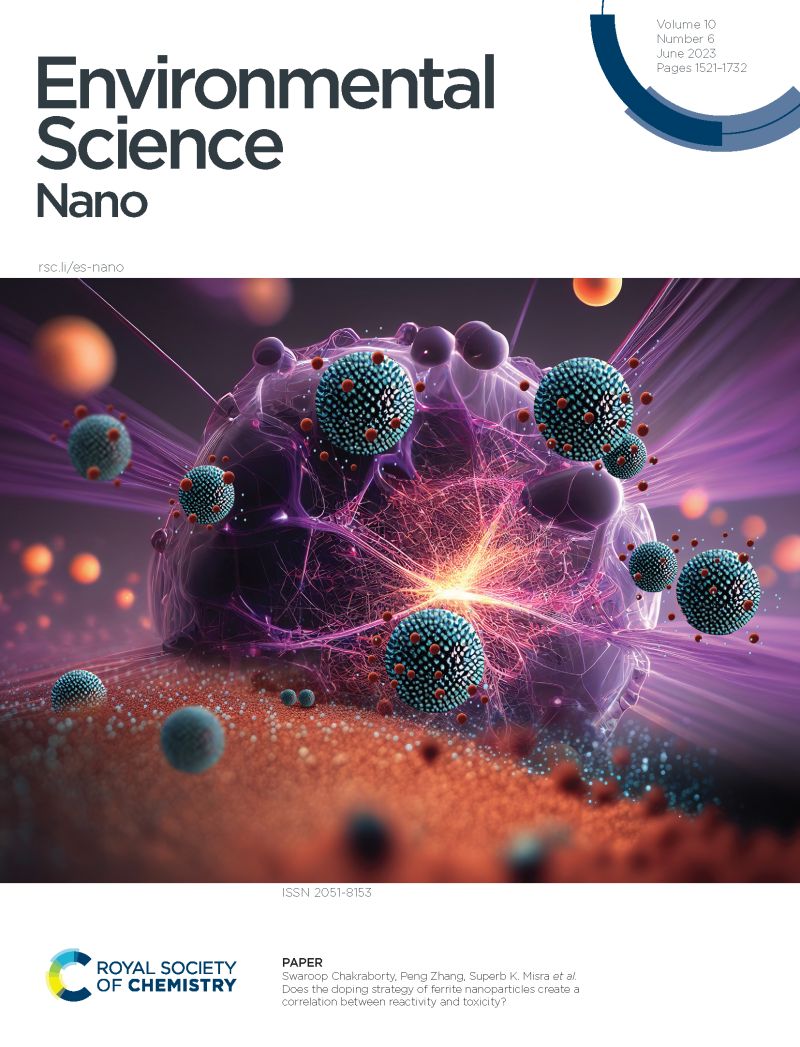Heavy metals enhance the deposition of clay colloids on silica surfaces via heterogeneous pathways
IF 5.8
2区 环境科学与生态学
Q1 CHEMISTRY, MULTIDISCIPLINARY
引用次数: 0
Abstract
Clay colloids, abundant in aquatic environments, can affect the migration of heavy metals, but knowledge on their deposition and release on environmental solid surfaces is incomplete. Here, the deposition and release of montmorillonite colloids (MONTs) on the silica surface was investigated in the presence of heavy metal (HM) ions. Quartz crystal microbalance with dissipation (QCM-D) test showed that MONT deposition onto silica is affected by the positive charge of MONT edges, whereby a low pH and a high ionic strength are conducive to this deposition. Deposition mainly occurred in the face-plane mode and this was reversible. HMs promoted deposition more strongly than Na+, Mg2+, or Ca2+. The bonding stability between MONT edges and the silica surface was so strongly enhanced by HM bridging that the deposition was irreversible. Density functional theory simulation revealed that the MONT edge (010) was more easily attached to the silica surface than the MONT surface (001). The adsorption energy of MONT edges on the silica surface increase with HM bridging and increased with heavy metal electronegative values. This work revealed how HMs favor the deposition of clay colloids onto silica and highlights the importance of heavy metal properties in the retention, thereby contributing to a comprehensive understanding of the migration and fate of HMs related to clay colloids.

重金属通过非均相途径促进粘土胶体在二氧化硅表面的沉积
在水生环境中大量存在的粘土胶体可以影响重金属的迁移,但对其在环境固体表面的沉积和释放的了解尚不完整。本文研究了重金属离子存在下蒙脱土胶体(MONTs)在二氧化硅表面的沉积和释放。石英晶体耗散微天平(QCM-D)测试表明,MONT在二氧化硅上的沉积受到MONT边缘正电荷的影响,低pH和高离子强度有利于MONT在二氧化硅上的沉积。沉积主要发生在面-面模式,这是可逆的。HMs对沉积的促进作用强于Na+、Mg2+和Ca2+。HM桥接极大地增强了MONT边缘与二氧化硅表面之间的键合稳定性,使得沉积是不可逆的。密度泛函理论模拟表明,MONT边缘(010)比MONT表面(001)更容易附着于二氧化硅表面。氧化硅表面MONT边的吸附能随HM桥接而增大,随重金属电负性值的增大而增大。这项工作揭示了HMs如何有利于粘土胶体在二氧化硅上的沉积,并强调了重金属性质在保留中的重要性,从而有助于全面了解与粘土胶体相关的HMs的迁移和命运。
本文章由计算机程序翻译,如有差异,请以英文原文为准。
求助全文
约1分钟内获得全文
求助全文
来源期刊

Environmental Science: Nano
CHEMISTRY, MULTIDISCIPLINARY-ENVIRONMENTAL SCIENCES
CiteScore
12.20
自引率
5.50%
发文量
290
审稿时长
2.1 months
期刊介绍:
Environmental Science: Nano serves as a comprehensive and high-impact peer-reviewed source of information on the design and demonstration of engineered nanomaterials for environment-based applications. It also covers the interactions between engineered, natural, and incidental nanomaterials with biological and environmental systems. This scope includes, but is not limited to, the following topic areas:
Novel nanomaterial-based applications for water, air, soil, food, and energy sustainability
Nanomaterial interactions with biological systems and nanotoxicology
Environmental fate, reactivity, and transformations of nanoscale materials
Nanoscale processes in the environment
Sustainable nanotechnology including rational nanomaterial design, life cycle assessment, risk/benefit analysis
 求助内容:
求助内容: 应助结果提醒方式:
应助结果提醒方式:


